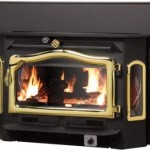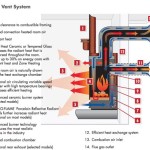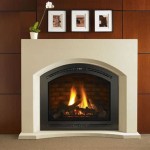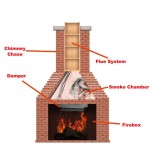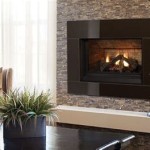Refacing a Brick Fireplace With Granite: A Comprehensive Guide
A brick fireplace often serves as a focal point in a home, adding both warmth and rustic charm. However, over time, the brick may become outdated, stained, or simply no longer align with the homeowner's aesthetic preferences. Refacing the fireplace with granite offers a durable, elegant, and modern solution to revitalize this central feature. This process, while potentially challenging, can dramatically transform the look and feel of a living space, enhancing its overall value and appeal. This article provides a detailed explanation of the steps involved in refacing a brick fireplace with granite, covering preparation, measurement, installation, and finishing touches.
Granite, a natural igneous rock, is a popular choice for fireplace refacing due to its exceptional durability, heat resistance, and aesthetic versatility. It is available in a wide range of colors, patterns, and finishes, allowing homeowners to customize the look of their fireplace to perfectly complement their existing décor. Furthermore, granite is relatively easy to maintain, requiring only occasional cleaning with mild soap and water. Its non-porous surface also makes it resistant to stains and spills, a significant advantage in a high-traffic area.
Before embarking on a fireplace refacing project, it is crucial to carefully assess the existing structure and plan the installation meticulously. This includes inspecting the brick for any signs of damage or instability, determining the desired dimensions of the granite facing, and selecting the appropriate adhesive and grout for the project. A well-executed plan will significantly reduce the risk of errors and ensure a successful outcome. Safety precautions are also paramount, especially when working with heavy materials and power tools. Always wear appropriate safety gear, including eye protection, gloves, and a dust mask, and ensure that the work area is well-ventilated.
Key Point 1: Preparation and Demolition
The first step in refacing a brick fireplace with granite is thorough preparation. This involves cleaning the existing brick surface, removing any loose or crumbling mortar, and addressing any structural issues. Begin by using a wire brush to scrub the brick, removing dirt, dust, and soot. A pressure washer can be used for a more thorough cleaning, but ensure that the brick is completely dry before proceeding. For stubborn stains, a specialized brick cleaner can be applied according to the manufacturer's instructions.
Next, carefully inspect the mortar joints for any signs of deterioration. Loose or crumbling mortar should be removed using a chisel and hammer. Take care not to damage the surrounding bricks. Once the loose mortar has been removed, use a tuckpointing trowel to fill the voids with fresh mortar, ensuring a smooth and even surface. Allow the mortar to cure completely before proceeding. This step is crucial for providing a stable and level substrate for the granite facing.
If the existing fireplace has a mantel or other decorative elements, these should be carefully removed. Store them in a safe place if they are to be reinstalled later. If the existing fireplace protrudes significantly into the room, it may be necessary to remove some of the brick to create a flush surface for the granite facing. This can be done using a demolition hammer or a chisel and hammer. Exercise caution to avoid damaging the surrounding walls or structural elements.
After the demolition is complete, clean the work area thoroughly, removing any debris or dust. A shop vacuum is useful for this purpose. Cover the surrounding floor and furniture with drop cloths to protect them from dust and debris. Finally, prime the brick surface with a masonry primer to improve adhesion of the adhesive. Allow the primer to dry completely before proceeding.
Key Point 2: Measurement, Cutting, and Dry-Fitting the Granite
Accurate measurement is essential for a successful fireplace refacing project. Begin by measuring the dimensions of the area to be covered with granite. Consider the desired thickness and overhang of the granite facing. Add a small margin of error to account for any irregularities in the brick surface. It is always better to have slightly too much granite than not enough.
Once the measurements have been taken, create a detailed template of the fireplace surround. This can be done using cardboard or plywood. The template will serve as a guide for cutting the granite to the correct size and shape. Pay close attention to any corners, curves, or other intricate details. Carefully transfer the measurements from the template to the granite slabs using a pencil or marker.
Cutting granite requires specialized tools and techniques. A wet saw with a diamond blade is the most common tool used for this purpose. The water acts as a coolant, preventing the blade from overheating and reducing dust. Always wear eye protection and a dust mask when cutting granite. Follow the cutting lines carefully, making smooth and even cuts. For intricate shapes, a grinder with a diamond blade can be used to refine the edges.
Before applying adhesive, dry-fit the granite pieces to ensure a proper fit. This is a crucial step that allows you to identify any potential problems and make adjustments before the adhesive is applied. Check the alignment of the seams and corners. If necessary, use a rubber mallet to gently tap the granite pieces into place. If any adjustments are needed, use the wet saw or grinder to refine the edges. Once you are satisfied with the fit, mark the position of each granite piece with a pencil. This will help you align them correctly during the installation process.
Key Point 3: Application and Grouting
With the granite pieces cut and dry-fitted, the next step is to apply the adhesive. Choose a high-quality adhesive specifically designed for use with granite and masonry. A polymer-modified thin-set mortar is a good option. Follow the manufacturer's instructions for mixing the adhesive. It should have a smooth, creamy consistency.
Using a notched trowel, apply a layer of adhesive to the back of each granite piece. The depth of the notches should be appropriate for the size and weight of the granite. Press the granite piece firmly onto the brick surface, aligning it with the pencil marks. Use a rubber mallet to gently tap the granite piece into place, ensuring a good bond with the adhesive. Repeat this process for each granite piece, working your way around the fireplace surround. Use spacers to maintain consistent grout lines between the granite pieces.
Allow the adhesive to cure completely before proceeding. The curing time will vary depending on the type of adhesive used, but typically it takes at least 24 to 48 hours. Once the adhesive has cured, remove the spacers and prepare to grout the seams. Choose a grout color that complements the granite. Mix the grout according to the manufacturer's instructions. Using a grout float, apply the grout to the seams, working it into the joints. Remove any excess grout with a damp sponge. Rinse the sponge frequently to prevent grout buildup.
After the grout has been applied, allow it to dry for the recommended time. Then, use a clean, dry cloth to buff the granite surface, removing any remaining grout haze. Inspect the grout lines for any cracks or voids. If necessary, apply a second coat of grout to fill these areas. Finally, seal the grout with a penetrating sealer to protect it from stains and moisture. Follow the manufacturer's instructions for applying the sealer. Allow the sealer to dry completely before using the fireplace.
Refacing a brick fireplace with granite requires careful planning, precise execution, and attention to detail. By following these steps and taking the necessary precautions, homeowners can transform their outdated fireplace into a stunning focal point that will enhance the beauty and value of their home. This comprehensive guide provides a foundation for understanding the process; however, consulting with a professional contractor is recommended for complex projects or if you lack experience with masonry and tile work. A properly refaced granite fireplace not only improves aesthetics but also provides years of enjoyment and warmth.

9 Trending Ideas For Refacing Your Fireplace

How To Cover A Brick Fireplace With Stone

This Previously Brick Fireplace In Fairfax Va Was Beautifully Refaced And Accented With Granite Living Room Remodel

Fireplace Refacing So You Want To Bob Vila

Reface Your Fireplace Fresh New Look Hearth Remodeling

Find Traditional Home Ideas And Decor Fireplace Design Surrounds

Refacing Fireplace And Chimney Authority

How To Cover A Brick Fireplace With Wood Stone Nina Hendrick Home

Reface A Fireplace With The Look Of Stone Or Brick Barron Designs

How To Cover A Brick Fireplace With Wood Stone Nina Hendrick Home
Related Posts


